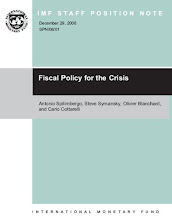The Insurance Regulatory Development Authority (IRDA) has set up a committee for working out guidelines for valuation of insurer companies and the likely initial public offer (IPO) price. The committee will look at four major aspects viz, mechanism to value the surplus that will be generated over time; the acquisition costs that consists of the commission expenses and the initial expenses for a product; will the IPO will take into account the initial expenses, the investment income, the future mortality risk, claims ratio, lapsation experience of the insurance company and, accordingly, work out the surplus or the deficit and the discount it to the present value of the business.
The formation of the committee has been staged at the right time, with major life insurance companies planning to list next year. According to the present regulations, an insurance company has to list within 10 years of operations. SBI Life and HDFC Standard Life have made their plans clear, while the largest private player ICICI Prudential, may list in 2010-11.
IRDA also notified major changes in the investment norms for insurers that will help companies diversify risks and lower the strain on capital. For policy holders, it would also mean higher yield on investments. Insurers investing in IPOs of private sector companies will enjoy more freedom that could help policy holders garner higher returns from equities post-listing. They can also invest in fixed-income instruments such as mortgage-backed securities (MBS) and bonds floated by developers of SEZs. Insurers will get greater leeway in their investments in mutual funds and venture funds as well.
IRDA also made changes in the quantum of investments that insurers can in IPOs. At present, insurers can invest in an IPO of a private sector company if the minimum issue size is Rs 500 cr, while the amount is significantly lower at Rs 100 cr for investment in IPOs of public sector companies. The regulator has now fixed a uniform minimum issue size of Rs 200 cr.
Among other changes made by IRDA, it has created a level playing field between private players and Life Insurance Corporation (LIC). The biggest impact of these guidelines will be on LIC. Earlier LIC was allowed to hold up to 30% of stake in any company but now it may be able hold only up to 10%. It may have to dilute stake in companies where holding is more than 10%. LIC currently holds more than 10% in companies such as Ranbaxy, Mahindra, L&T.
The formation of the committee has been staged at the right time, with major life insurance companies planning to list next year. According to the present regulations, an insurance company has to list within 10 years of operations. SBI Life and HDFC Standard Life have made their plans clear, while the largest private player ICICI Prudential, may list in 2010-11.
IRDA also notified major changes in the investment norms for insurers that will help companies diversify risks and lower the strain on capital. For policy holders, it would also mean higher yield on investments. Insurers investing in IPOs of private sector companies will enjoy more freedom that could help policy holders garner higher returns from equities post-listing. They can also invest in fixed-income instruments such as mortgage-backed securities (MBS) and bonds floated by developers of SEZs. Insurers will get greater leeway in their investments in mutual funds and venture funds as well.
IRDA also made changes in the quantum of investments that insurers can in IPOs. At present, insurers can invest in an IPO of a private sector company if the minimum issue size is Rs 500 cr, while the amount is significantly lower at Rs 100 cr for investment in IPOs of public sector companies. The regulator has now fixed a uniform minimum issue size of Rs 200 cr.
Among other changes made by IRDA, it has created a level playing field between private players and Life Insurance Corporation (LIC). The biggest impact of these guidelines will be on LIC. Earlier LIC was allowed to hold up to 30% of stake in any company but now it may be able hold only up to 10%. It may have to dilute stake in companies where holding is more than 10%. LIC currently holds more than 10% in companies such as Ranbaxy, Mahindra, L&T.




No comments:
Post a Comment